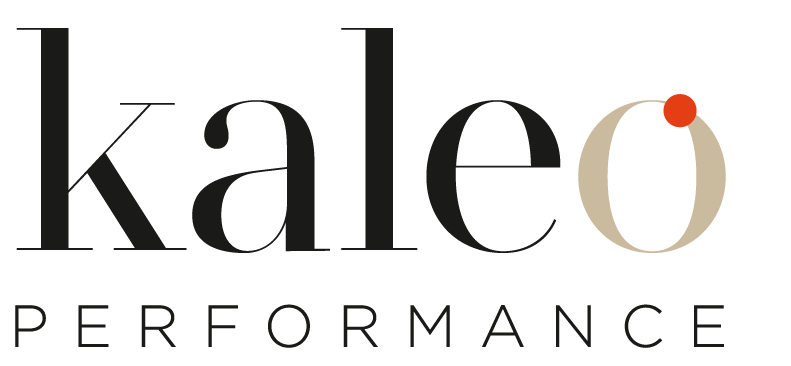Why writing procedures Matters
– Ensures operational consistency and risk management
– Supports business continuity and digital transformation
– Prepares your organization to leverage emerging technologies like agentic AI
– Transforms procedures from static documents into powerful tools for quality, safety, and innovation
Introduction
For several years, documenting procedures was often neglected or considered “unfashionable.” Today, however, writing clear, structured procedures is critical—not only to optimize processes and manage risks but also to ensure business continuity and prepare for emerging technologies such as agentic AI.
Based on my experience with ISO certification audits and setting up business continuity plans, I have seen how critical clear procedures are—not only to respond effectively during emergencies and sustain operational resilience but also to establish control points that mitigate risks and ensure consistent outcomes. Additionally, well-documented procedures are essential in preparing organizations to leverage new technologies such as automation and agentic AI by clearly defining process steps, decision points, and exception handling.
Why Document Procedures?
A procedure is a sequence of standardized elementary tasks triggered by a defined need and bounded by the achievement of an expected result. It is not an organigram or a role/job description. Procedures focus on the details necessary to manage risks and meet compliance requirements, for example, in industries such as aviation or healthcare.
Clear, well-structured procedures serve as the organization’s memory: they document implicit knowledge, synchronize activities across functions, identify points of failure, and reduce inconsistencies. They form a framework that supports analysis, improvement, and digital transformation efforts.
Choosing the right level of granularity is crucial. Excessive detail requires significant effort and may hinder flexibility, yet insufficient detail prevents automation and increases risk exposure. The benefits of documenting procedures properly outweigh the investment when they are used as tools for quality, safety, and innovation.
The Writing Process: DO
1. Structure and Clarity
Use clear, concrete, and precise language. Write in simple terms, using verbs in the infinitive to describe actions. Each procedure should clearly answer:
– Who does what?
– How?
– For what purpose?
– Which risks do it address?
Adopt a standardized template with defined roles, inputs, outputs, control points, and performance indicators.
2. Manage the Work as a Project
Managing procedure writing as a project—with defined stages—significantly improves process consistency, risk control, and resilience. This approach lays strong foundations for business continuity and digital transformation readiness. Writing effective procedures demands careful planning, iterative collaboration, and alignment with broader organizational processes.
3. The Writing Process: Step-by-Step
Step 1. Start with a Process Map
Begin by creating or revisiting a process map that identifies and organizes all the processes, subprocesses, and activities within the organization. This high-level map provides a comprehensive overview and helps prioritize which procedures to write first based on risk, complexity, or compliance needs.
Benefits: Map your processes to understand the big picture and define priorities.
Step 2. Interview Subject Matter Experts (SMEs) and Stakeholders
Engage with the people who perform the work daily to gather detailed information on existing practices, informal steps, tools used, and common challenges. Understand the sequence of actions, decision points, timing, and inputs/outputs. Proactively identify risks, critical control points, and exceptions to handle.
Benefits: Leverage frontline knowledge to capture the reality of work and associated risks.
Step 3. Analyze the Existing Processes
Analyze the collected information to detect inefficiencies, redundancies, bottlenecks, or gaps. This step may reveal opportunities to optimize workflows before formalizing them into written procedures. Clarify task sequences, parallel activities, dependencies, and hand-offs between functions.
Benefits: Use analysis to improve and clarify processes before standardizing.
Step 4. Draft the Procedure
Using a standardized template, write the procedure focusing on clarity and usability. The procedure should include:
– Purpose and scope
– Triggering events (when the procedure starts)
– Detailed step-by-step actions in logical sequence, expressed as infinitive verbs (e.g., “verify,” “record,” “approve”)
– Roles and responsibilities at each step
– Tools, forms, and resources needed
– Expected outputs and acceptance criteria
– Control points to manage risk and ensure compliance
– How to manage exceptions or escalate issues
Write in simple, direct language, aiming for consistency and precision to reduce ambiguity.
Benefits: Draft clear, standardized, and actionable procedures aligned to real work and risk management.
Step 5. Test and Validate
Before official publication, conduct iterative validation cycles involving:
– Initial self-review by the authors to check completeness and clarity
– Reviews with process owners and SMEs to ensure accuracy, optimize work methods, and ensure consistency with the overall process system
– Pilot testing with end-users who perform the tasks to confirm usability and practicality
– Collection and incorporation of feedback to refine the procedure accordingly
Multiple testing rounds are often necessary. This stage is critical to guarantee that the written procedure reflects operational reality, integrates seamlessly with other processes, and genuinely improves efficiency.
Benefits: Validate with all stakeholders and users to ensure accuracy, consistency, and usability.
Step 6. Roll Out and Train
Once validated, communicate the procedure widely along with clear instructions and resources. Conduct training sessions tailored to user groups, emphasizing the importance of adherence and the benefits of the procedure. Support change management efforts to encourage adoption and address resistance.
Benefits: Train and engage users to embed the procedure into daily practice effectively.
Particular Considerations
Emergency Procedures
Emergency procedures must be reliable, anticipating risks and side effects. Use decision trees to guide diagnosis and decision-making, ensuring quick, accurate responses.
Industry-Specific: Route Sheets
A route sheet is a procedure that precisely specifies industrial operations and necessary quality controls in manufacturing. Typically prepared by methods or industrialization departments, route sheets are tested and adjusted in workshops. They manage production workflows and facilitate automation and production cost calculation.
DON’T: Common Pitfalls to Avoid
1. Don’t over-detail to the point of micromanaging. Avoid writing procedures at the job description level; excessive detail overwhelms users and complicates maintenance.
2. Don’t use complex or ambiguous language. Jargon and vague wording reduce clarity and compliance.
3. Don’t skip verification and user feedback. Unvalidated procedures risk being impractical or ignored.
4. Don’t neglect emergency and exception scenarios. Failing to document these impairs crisis response.
5. Don’t copy generic templates without adaptation. Procedures must reflect your organization’s realities, tools, and culture.
6. Don’t treat procedures as static documents. Without regular review and updates, they become obsolete.
7. Don’t confuse procedures with org charts or process maps. Procedures describe operational steps, not organizational structure.
8. Don’t underestimate training and change management. Distributing documents alone doesn’t ensure practice change.
Conclusion
In our fast-changing world, well-crafted procedures are essential to optimize processes, manage risks, ensure consistency, and secure business continuity. They form the backbone of organizational knowledge and facilitate automation and agentic AI applications when the time comes.
In a future article, I will share a practical framework for process mapping that complements robust procedure writing.
If you are looking for other articles please visit my blog : https://kaleo-performance.com/en/blog-en/

